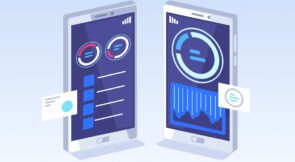Software testing is part of the software development life cycle involving a process used to identify the correctness, completeness, and quality of the software being developed. It includes a set of activities that are conducted to find bugs and errors in the software so that they can be corrected before the product is released to end users.
Based on levels, software testing is of the following types:
- unit testing
- integration testing
- system testing
- regression testing
In this post, you’ll learn about the differences between integration testing vs functional testing.
Functional Testing
Functional testing assesses a system/application against all the functional requirements or specifications, including technical details, data manipulation and processing, and other specific functionalities.
This type of testing checks whether the application is providing all the functionalities based on the functional requirement of that application. It works as testing of a slice of the functionality of the entire system.
Functional testing is a type of black-box testing that holds test cases based on the specification of the component under test. Black-box testing is a method that helps examine an application’s functionality without peeking into its internal structure or implementation process. In this type of testing, the user won’t know the internal process that takes place.
This testing ensures that the functions of an app are working in compliance with the required specification as given by the user.
Workflow
Functional testing involves the following steps:
- First, it identifies and understands the requirements and specifications provided and prepares a test plan to go on with the testing procedure.
- Then, according to the test plan, you design the test cases.
- Once the test cases are designed, after analysis and planning, a document is prepared for the traceability matrix.
- Following that, input data is created according to the requirement, and the test cases are executed.
- Finally, the actual results are compared with the expected output to verify and validate if the functions are working according to the specifications or not.
Use Case
Let’s take a library management portal on which the user logs in with an individual user account and password. The login page will have two text fields, one for username and one for password. It’ll also have two buttons: login and cancel.
Upon clicking the login button, it directs the user to the library management homepage, while the cancel button cancels the login process. The user ID field and the password field have their specifications.
Functional testing techniques test the use-case scenario where the system works to see if all the components are working perfectly in combination.
Integration Testing
Integration testing is a kind of procedure that falls under functional testing. It’s defined as a type of testing technique where the software modules are integrated logically and tested as a group.
Integration testing is a process of testing the interface between two units. It follows the module-by-module sequence. The unit-tested models are combined, and then they go through a proper sequence where each module is tested sequentially.
In integration testing, the data flow between the dependent modules is to be checked.
There are three different approaches to integration testing:
- Big Bang approach: This approach combines all the modules once and verifies the functionality after the completion of individual module testing. After the combination of all the components, it’s considered an entity tested as a unit. The integration process fails to execute if all the components in the unit are not completed.
- Top-down approach: This approach is followed when the testing takes place from the top to bottom according to the control flow of the system. The modules that are on the higher level are tested first and, after that, the lower-level modules are tested. Then, the modules are integrated together to check the functionality of the system.
- Bottoms-up approach: This approach is followed when the testing takes place from the bottom to the top according to the control flow of the system. The modules that are on the lower level are tested first and, after that, the upper-level modules are tested. Then, the modules are integrated together to check the functionality of the system.
Workflow
Integration testing involves the following steps:
- First, it identifies and understands the requirements and specifications provided.
- Then, you need to break the application into different modules and take an overview of each module’s functionality.
- After that, you have to identify the entry and exit points and prepare a test plan to go on with the testing procedure.
- Among all the ways that integration testing is conducted, you have to pick the most appropriate testing approach according to the needs of the application and identify test conditions according to the data flow.
- Finally, you have to design various test cases and test scripts to perform integration testing after deploying the chosen modules.
Use Case
Let’s assume you have an email application with the following modules:
- login page
- inbox module
- delete mail module
In this scenario, you don’t need to test the functionality of individual pages. Instead, you’ll test how each page interlinks with the others, such as checking the linking between the inbox page and the delete mail page. Similarly, the integration between the login page and the inbox module needs to be verified.
This type of testing is achieved by integration testing.
What Is Integration Functional Testing?
Integration testing is nothing but a part of functional testing. It’s the second level of functional testing that tests a given software. Integration functional testing helps to make sure that all the application modules are well-integrated and that they work together as expected according to the functionalities defined in the SRS document.
Integration functional testing makes sure that the website/application is defect-free, but it checks the functionality module-wise. It ensures the expected behavior of all the functionalities and also if the architecture is correct with the required security.
This kind of combined testing helps in improving the overall quality and functionalities.
Use Case
Think of a simple login portal for any organization. Every login page will contain a username (email) and password to validate the user and redirect to the desired path.
The functional testing part is to check whether the entered details by the user are according to the proper specifications provided. If not, then it should generate an alert to the user to correct details. Meanwhile, integration testing ensures that all the different components of the portal behave accordingly after entering the details.
For example, upon entering the correct details, the user should be redirected to the homepage of the organization. Integration testing tests the interface between the different modules, and functional testing tests the working of the application as a whole.
Functional Testing vs. Integration Testing
Functional testing is performed on software to validate and verify all functionalities of an application. On the other hand, integration testing is performed to validate the interaction across the unit-tested modules and to verify if they work well or not when compiled together.
The key differences between the two can be seen as follows:
| CRITERIA | FUNCTIONAL TESTING | INTEGRATION TESTING |
| Definition | testing the behavior of a given application according to the software specifications | type of functional testing that verifies the integration of each module together as an integrated component |
| Order of testing | done before nonfunctional testing of the application | done after unit testing and before system testing |
| Complexity | more complex compared to integration testing, as the whole functionality of the application is tested | less complex than functional testing, as it tests in modules |
| Testing techniques | uses the black-box testing technique | uses both white- and black-box testing techniques; gray-box testing technique is another name for it |
| Point of focus | entire application | integration of modules or units |
| Resolving issues | issues that stop the application from functioning according to their requirements | issues occurring during different modules integration |
| Maintenance | very expensive procedure | very expensive and high-maintenance procedure |
| Scope | on the basis of software requirements | on the basis of interface requirements |
| Teams involved | testers | developers and testers |
| Tools used | UFT, Selenium, Tricentis Tosca | Selenium, Jasmine, JUnit |
Pros of Functional Testing and Integration Testing
Functional Testing
- Helps in identifying issues with an application’s functionality before the problem becomes too big to tackle.
- Ensures that the required features are working as expected and that the system is able to cope with unexpected conditions.
- Also is an effective way to test the system under a variety of conditions and scenarios.
Integration Testing
- Provides a very systematic way to assemble a software system and conduct tests to find bugs associated with interfacing.
- Need not wait for the completion and unit testing of all the modules.
- Really important to verify if the software modules are working in unity or not.
Cons of Functional Testing and Integration Testing
Functional Testing
- Is a slow and detailed process that takes a long time to complete, so testing a new feature might be tedious.
- Is less accurate than other testing techniques.
- Is more expensive to conduct.
Integration Testing
- Is difficult to perform, as it also requires some white-box testing techniques.
- Is a very time-consuming process that’s also very resource-intensive, as it tests the interface between all connected modules.
- Requires the use of stubs and drivers, which, if not accurately created, can result in faulty testing.
Conclusion
In this post, we’ve showcased different utilities of functional testing and integration testing.
You learned about both types of testing in detail, including their pros and cons, and studied the differences between the two. You’ve also seen why integrated testing cannot be properly functional and why it’s called integrated functional testing.
I hope that after reading this post you’re aware of functional and integration testing and will be able to distinguish between the two. If you want to learn more about a platform that helps you with automated AI-based functional testing, visit Testim.



